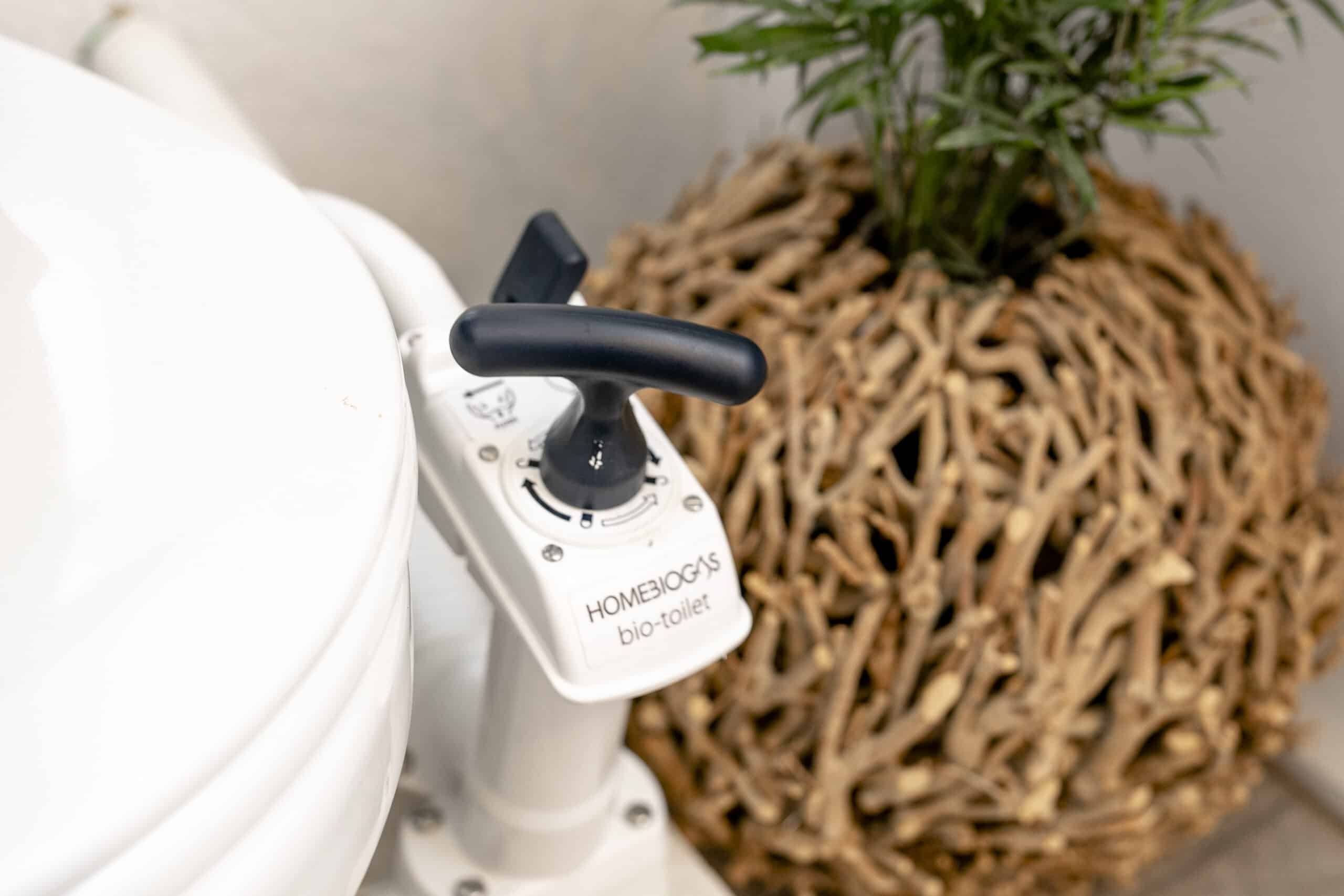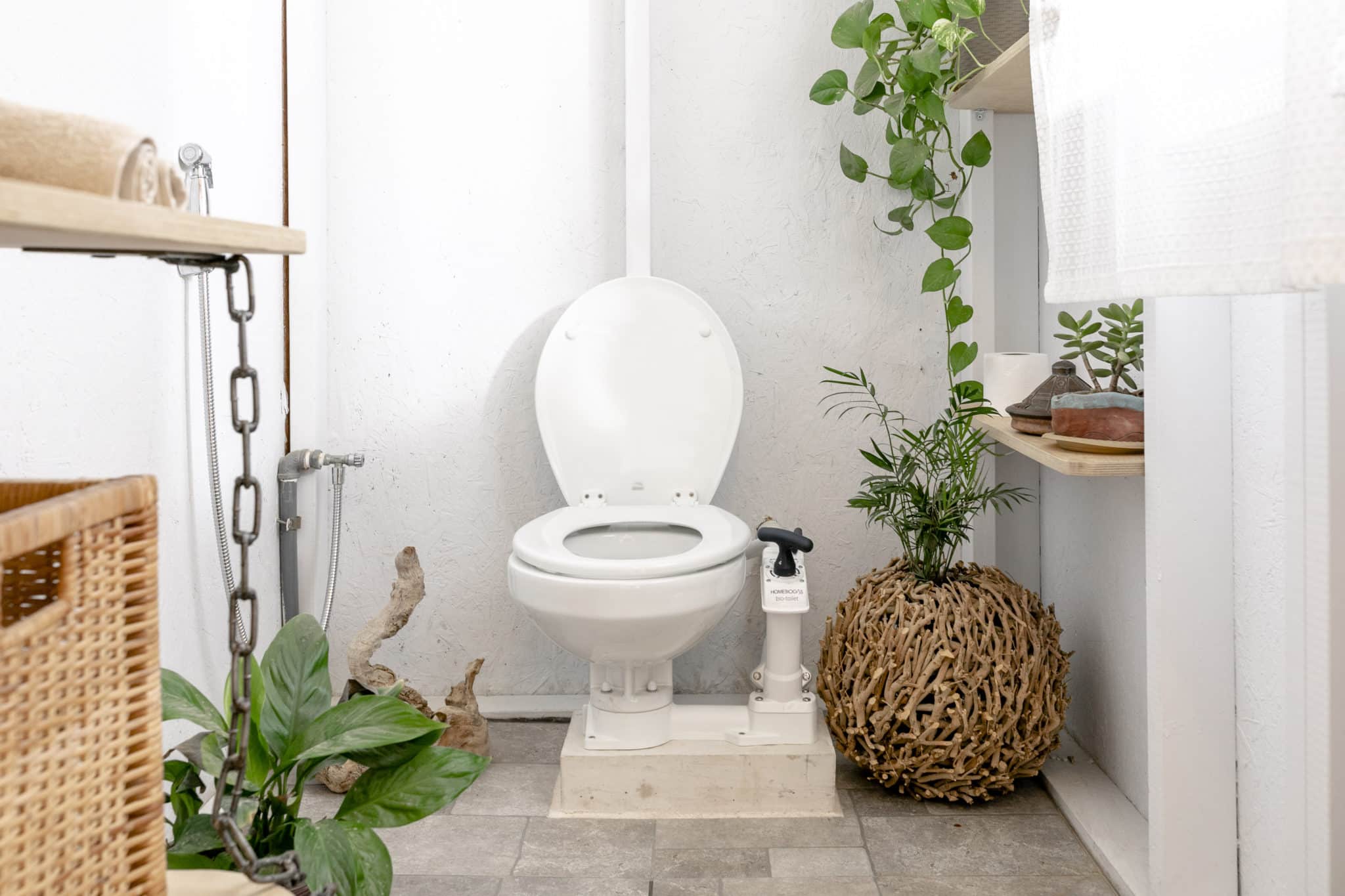
What is an outdoor toilet?
An outdoor toilet is a sanitation facility outside a building or dwelling. It’s primarily used in areas with limited access to indoor plumbing, such as off-grid locations, campsites, and other outdoor recreational sites.
Outside toilet solutions vary in design and functionality, depending on the on-site resources, the number of users, and individual preferences. They go from simple to complex structures with enclosures, roofs, and flushing systems.
The most common outside toilet solutions are:
- Pit latrines. They’re inexpensive and easy to build, usually consisting of a hole in the ground with a platform or seat on top. The waste is deposited into the hole, usually covered with a lid or bench when not in use.
- Composting toilets. They rely on natural processes to decompose waste into compost and typically have separate compartments for solid and liquid waste. Usually, carbon-rich materials need to be added regularly in the composting chamber to facilitate waste decomposition.
- Portable toilets. They’re lightweight outside toilet solutions that can be easily moved and set up in different locations. You can often find them at construction sites and temporary events.
- Outhouses. They’re outdoor constructions typically made of wood and have a roof, walls, and a door for privacy. Inside, you can dig a pit latrine or install a composting toilet.
- Biodigester toilets. These toilets connect to a sealed fermentation tank where anaerobic bacteria break down organic waste and turn it into biogas and fertilizer.
- Incinerating toilets. They use heat to burn and sterilize waste.
Pros and Cons of outdoor toilets
The benefits and drawbacks of having a toilet outside your house depend on several factors — from its design and location to your needs and preferences.
Here are some pros and cons of having an outdoor toilet:
Advantages:
- Outdoor toilets can be helpful when working in the garden or having a garden office not close to your house.
- Installing an outside WC is cheaper than building an indoor toilet when running water and a sewage infrastructure connection are unavailable.
- Most outdoor toilets are designed to use minimal or no water, helping you save resources and reduce water bills.
- Outdoor toilets (especially composting outdoor systems) require less energy to function and handle waste than an indoor, flushing toilet.
- Outside toilets help you save space inside tiny houses.
- With dry systems, outdoor toilets may be more hygienic, as they have better ventilation and less likelihood of cross-contamination.
- A nice-looking outdoor toilet will blend in with its surroundings and quickly become a visually appealing addition to your property.
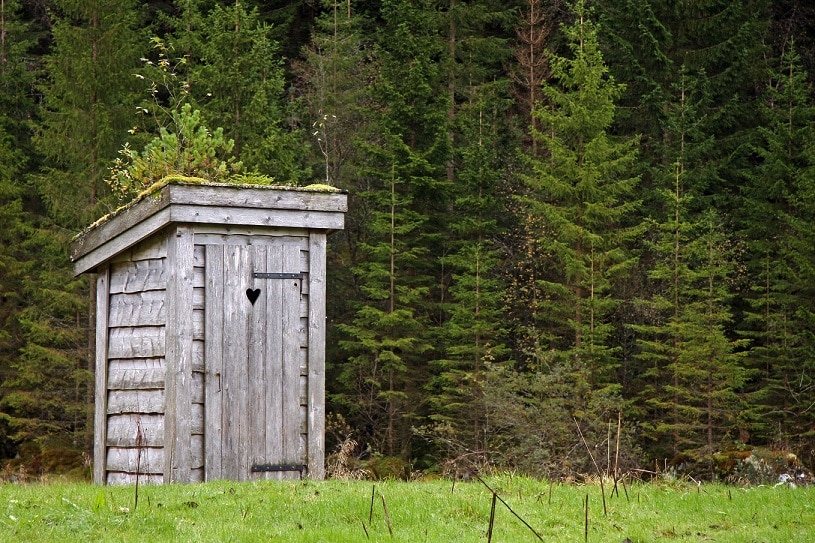
Disadvantages:
- An outside WC can be uncomfortable in bad weather or at night.
- Outdoor systems offer less privacy than indoor toilets.
- Depending on your toilet solution, it may require more maintenance than an indoor toilet.
- Outdoor toilets emanate unpleasant odors when not correctly maintained.
How to empty an outside toilet?
While portable toilets are designed to be quickly emptied and cleaned, other outdoor solutions can require some extra effort to empty them.
For emptying a pit toilet, for example, you’ll need a manual or motorized pump to transfer the waste to a vacuum truck, which then transports it to a designated treatment facility. Or, you can cover the pit with soil, dig a new hole and move the toilet structure to the new location.
On the other hand, if you have a composting or incinerating outdoor toilet, you must regularly remove the compost or ashes. Make sure you always follow the manufacturer’s instructions when operating these systems.
Are planning permissions necessary for an outside toilet?
Whether planning permission is required for an outdoor toilet will depend on the specific laws and regulations in your area and the type of outdoor toilet you’re building. For example, states like Alabama, Arizona, or California require permits for pit latrines and, sometimes, composting toilets. In some states, planning permissions are needed only for properties in conservation areas, flood zones, or other special area designations.
Primal survivor provides a complete list of requirements by state to help you follow the local rules and regulations when building an outdoor toilet.
Best outside toilets to consider
- HomeBiogas Bio-toilet kit
The HomeBiogas Bio-toilet kit can be installed in an outhouse for increased comfort. It also includes a biodigester where waste is stored and treated. This toilet solution uses anaerobic digestion to break down organic waste and transform it into biogas and treated effluent for the soil. You can use the biogas produced for cooking, while the treated effluent can nourish your soil and garden.
HomeBiogas Bio-toilet kits are designed to be easy to install and use. The HomeBiogas system connected to the toilet is available in three sizes, the smalles size has the ability to produce up to two hours of cooking gas daily, and is suitable for households with up to six individuals.
In addition, the HomeBiogas Bio-Toilet looks and feels just like a regular toilet, making it a seamless addition to any home.
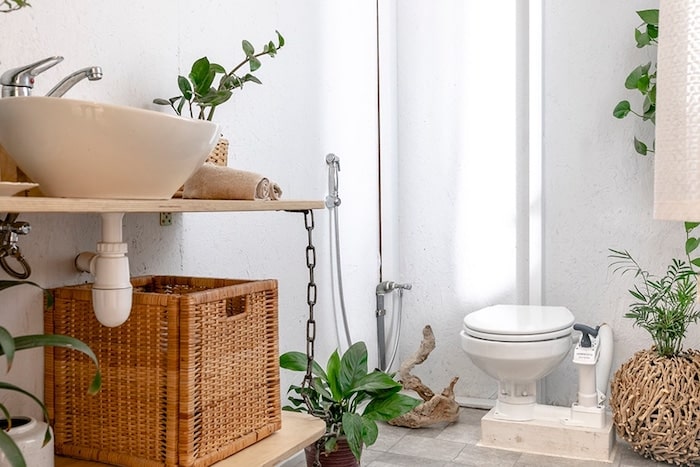
HomeBiogas Bio-toilet
Designed for the next generation of green innovation.
- Separett Villa 9215
The Separett Villa 9215 is a urine-diverting toilet designed to separate liquid and solid waste to make waste management more manageable and reduce the water needed for sanitation. The system transforms waste through dehydration, which removes the moisture from the feces and urine, reducing the volume and weight of the trash.
The Separett Villa model uses composting bags for easy emptying and cleaning. The dried waste can then be disposed of in a trash bin or used as fertilizer.
- Stansport portable camp toilet
The self-contained Stansport portable camp toilet includes a seat and a waste tank. It’s lightweight and easy to transport, making it suitable for camping, hiking, or traveling. The base has sturdy handles, allowing it to carry to and from different locations easily.
This toilet also uses disposable sanitary bags to make emptying easy. It has a weight capacity of 350 pounds.
- BioLet 30 NE
The BioLet 30 NE is a waterless, energy-efficient system suitable for rustic cabins, hunting camps, or off-grid houses. It’s a self-contained system that collects waste in a chamber and must be mixed with bedding material, such as sawdust or peat moss.
This toilet drains liquids into a separate container of your choice. Depending on the model, it can also include a fan that circulates warm air and speeds up the decomposition and evaporation of liquid within the compost.
- Laveo by Dry-Flush Portable Toilet
The Laveo Dry Flush is a portable toilet that functions without water or chemicals, using self-sealing bags to contain waste. This way, it eliminates odors and the need for cleaning. It’s an excellent choice for a toilet outside the house.
The easily replaceable cartridges seal in smell without the need for water to flush, but they can be a little pricey.
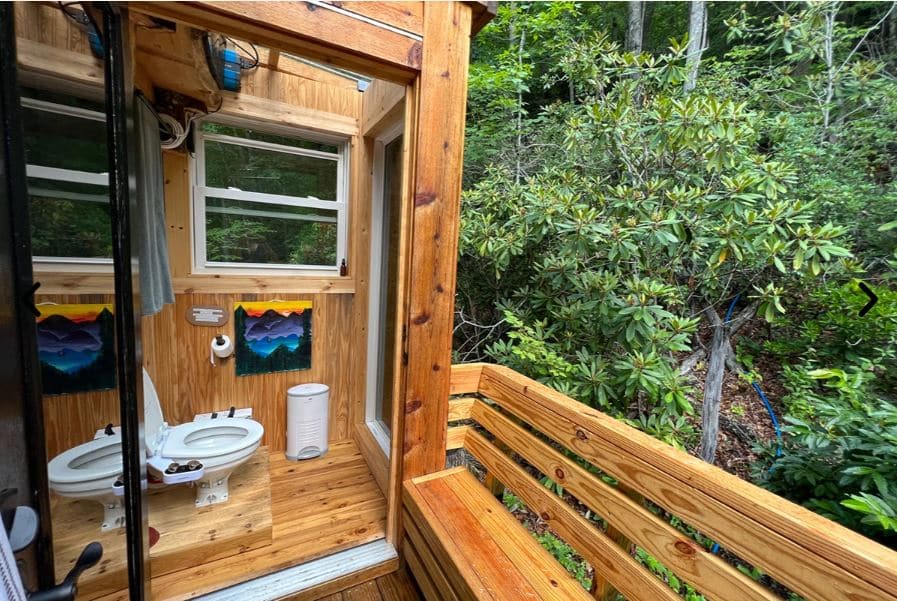
Final Thoughts
Modern outdoor toilets are a convenient and environmentally-friendly option not just for off-grid homeowners but anyone who enjoys spending time in nature. There’s an outdoor toilet solution for every need, with various options available, from simple composting toilets to advanced models with features like odor control or biogas production.
Whether you’re looking to reduce your environmental impact, save money on water and sewage bills, or want a 100% environment-friendly waste management solution, outdoor toilets are worth considering.
